Why Your Well Woman Exam is So Important?
Specially designed for a woman’s needs, the Well Woman Exam is part discussion and part physical exam. It can involve testing, counseling or immunizations depending on your age, lifestyle and medical history. In short, it is your personal health roadmap.
Early detection through health screenings is the first step to the best treatments and outcomes. A Well Woman Exam will provide screenings for breast, colon, and cervical cancers; osteoporosis; heavy periods and other health conditions you may be concerned about.1
Your medical tests can put you in a vulnerable position and waiting for results can be unsettling. But the relief from being sure of what’s going on with your body is what makes screening and testing so important. And keeping to a schedule as guided by your healthcare provider (usually annually) is part of the commitment you should make to yourself.
Your Health is a Priority
Checkups Improve Women’s Health
And we know that women’s health is a critical foundation for the advancement of families and communities.
And Yet Cancer Screenings Are Down
According to research, last year just 10% of women globally were tested for any type of cancer.2
Testing for STIs is Dropping, Too
Global research also shows a slow decline in testing for STIs even as awareness campaigns pointing to their prevalence grows.3
What to Expect at Your Well Woman Exam
Depending on your age, the Well Woman Exam may cover different health topics. Let’s take a look at what you can expect.






In Your Late Teens
This is likely your first Well Woman Exam. Now is the time to establish open communication with your health provider. Be willing to have an honest discussion about your sexual and reproductive health – no topic should be off-limits. While your Well Woman Exam will be designed with your unique health in mind, you can expect it to include the following elements:
- Evaluation and Appropriate Testing
- STI Testing
- Immunizations
- Visual Exam of Breast & Pelvic Area

In Your Twenties
Your Well Woman visits during ages 20-29 years may include family planning, contraception discussion, the beginning of cervical cancer screening and more. Be sure include contraception and family planning discussions during your Well Woman Exam. Your exam may include the following screenings and tests:
- Pap Test
- Pelvic Exam
- Clinical/Self-Breast Exam
- Sexually Transmitted Infection (STI) Testing
- High Blood Pressure Check-Up
- Menstrual Health

In Your Thirties
For women ages 30-40, this may be a time in your life when you’re more sexually active, and you may have given birth or plan to become pregnant. Be sure to discuss contraception and family planning during your exam. Your Well Woman Exam may include the following screenings and tests:
- Pap Test
- Pap + HPV together
- Pelvic Exam
- Clinical/Self-Breast Exam
- Sexually Transmitted Infection (STI) Testing
- High Blood Pressure Check-Up
- Menstrual Health

In Your Forties
You may notice weight gain during ages 40-50 because of stress from juggling family, work, friendships, and social activities. Stress can lead to weight gain. So, during your next Well Woman Exam, be sure to talk with your healthcare provider about your mental health as well as nutrition and exercise. Your Well Woman Exam may include the following screenings and tests:
- Pap Test
- Pap + HPV together
- Pelvic Exam
- Clinical/Self-Breast Exam
- Breast Cancer Screening/Mammogram
- Sexually Transmitted Infection (STI) Testing
- Colorectal Cancer Screening
- High Blood Pressure Check-Up
- Menstrual Health

In Your Fifties
For women ages 50-60, this is a time when you may begin menopause. During your next Well Woman Exam, be sure to talk with your healthcare provider about any bodily changes you’ve experienced, your questions about menopause and what you may expect. Your Well Women Exam may include the following screenings and tests:
- Pap Test
- Pap + HPV together
- Pelvic Exam
- Clinical/Self-Breast Exam
- Breast Cancer Screening/Mammogram
- Sexually Transmitted Infection (STI) Testing
- Colorectal Cancer Screening
- High Blood Pressure Check-Up
- Menstrual Health

In Your Sixties and Beyond
For women 60 or older, this is a time when your body undergoes changes that may include weakening of your bones, which could lead to osteoporosis. During your next Well Woman Exam, make sure to talk with your healthcare provider about ways to strengthen your bones and lifestyle changes that can help slow down the progression of osteoporosis. Your Well Woman Exam may include the following screenings and tests:
- Pap Test
- Pap + HPV together
- Pelvic Exam
- Clinical/Self-Breast Exam
- Breast Cancer Screening/Mammogram
- Sexually Transmitted Infection (STI) Testing
- Colorectal Cancer Screening
- Bone Density Test/Osteoporosis
- High Blood Pressure Check-Up
- Menstrual Health

Real Woman Stories
Who is Hologic?
We support women at every stage of life by developing life-changing medical technologies that effectively detect, diagnose and treat the health conditions that disproportionately affect women.
We know that improving women’s health can have a powerful ripple effect on families, communities and society; it is one of the many reasons that drive us to relentlessly pursue better health for women everywhere.
It’s also why we created the Hologic Global Women’s Health Index and Project Health Equity – to underscore the importance of women’s health, screenings and access to care.
Hologic helps women around the world live healthier lives.

- Get Your Well Woman Visit Every Year. https://health.gov/myhealthfinder/topics/everyday-healthy-living/sexual-health/get-your-Well Woman-visit-every-year
- Hologic’s Year 4 Global Women’s Health Index. https://hologic.womenshealthindex.com/key-findings
- Hologic’s Year 4 Global Women’s Health Index. https://hologic.womenshealthindex.com/key-findings
The content in this piece is for informational purposes only and is not intended to be medical advice. Please contact your medical professional for specific advice regarding your health and treatment. This information is not intended as a product solicitation or promotion where such activities are prohibited. Because Hologic materials are distributed through websites, eBroadcasts and tradeshows, it is not always possible to control where such materials appear. For specific information on what products may be available in a particular country, please write to womenshealth@hologic.com.

